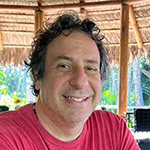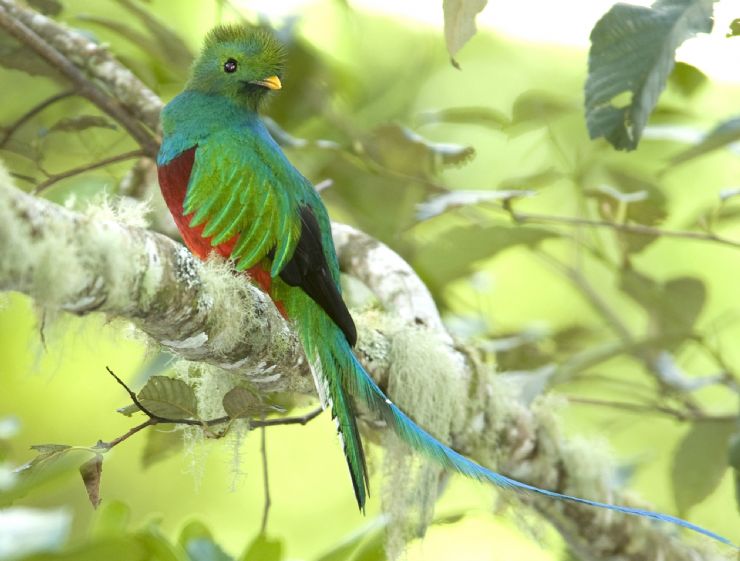 Male Quetzal spotted in Los Quetzales National Park
Male Quetzal spotted in Los Quetzales National Park
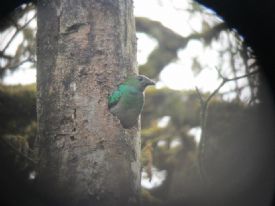
Female quetzal at Monteverde Reserve |
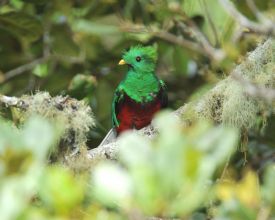
Quetzal in the forest in San Gerado de Dota |
If I had to pick my favorite two-winged wonder in Costa Rica, it would have to be the resplendent quetzal bird. Famous for its majestic coloring and long feathered tails, quetzals are considered the most beautiful bird in the world. They can be found in the mountain forests of this Costa Rica, where they call home. They are currently a "near threatened" species, making them fairly challenging to spot. But rest assured, with my frog instincts, we'll be sure to cast our eyes on this resplendent sky-bound creature.
About the Quetzal
The quetzal have iridescent green wings, a red belly and a tail that stretches up to 64 centimeters long - that's almost six times bigger than me! It uses the green coloring to blend into the forest background. With its grace and one-of-a-kind plumage, the quetzal is renowned for its splendor. As a matter of fact, the Aztec word "quetzalli" initially described this bird's tail feathers, believing the creature protected them in battle.
While the bird lives in damp mountain forests, it is most active in the canopy and upper reaches of the treetops. It is the national bird of Guatemala, though Ticos cherish it just as much. In Costa Rica you can see it flying from 1,300 meters to 3,000 meters in elevation.
7 Days / 6 Nights
Starting at $779 per person
Parent and young quetzals forage in fruit trees, such as fig and avocado. Like me, its diet also consists of insects. Unfortunately, the menu doesn't stop there. Quetzals eat frogs too, so I have to be careful to stay out of sight when admiring them. By putting on my friendly face, I've made dozens of bird friends - they tell me what the world looks like from above.
Where to Spot the Quetzal Bird
To lay your eyes on quetzals in Costa Rica, head to to the Monteverde Cloud Forest Reserve. This is the most popular place in the country to eye the avian parade - I have seen dozens of quetzals here. The reserve covers a 26,000 acre biozone in a misty atmosphere produced by the high humidity at the striking elevation of 1,600 meters above sea level. However, since the secret has been out that this is the place to see quetzals, the droves of visitors in the trails make the pursuit a bit trickier.
A less-known spot is San Gerardo de Dota, a stunning valley tucked in the mountains of Cerro de la Muerte. It's only 85 kilometers away from the capital of San Jose. After the nesting season between March and July, quetzals migrate down to the lower slopes to search for food. I just hope they're not looking for me! The best time to see the quetzal is during the dry season, which lasts from December to April.
Rise and shine! For bird lovers, the key is to spotting them is to wake up early in the morning. Red-eyed tree frogs like me are nocturnal, so I'm usually just getting to bed at this point. But if I can stay awake, I reap the benefits of the find.
You can also take a walking tour in Los Quetzales National Park, which is located in the Pacific side from the Talamanca Mountain Range. I may jump between tree branches, but one thing I share with humans is that I've always wanted to fly. The quetzal bird flies high in a majestic beauty.
Similar to many other species, the destruction of its habitat has placed this bird on the threatened list. Without trees to eat and nest in, the quetzal's survival has been a challenge. So, make sure that when you're searching for it, you keep the trails and habitat just how you found them.
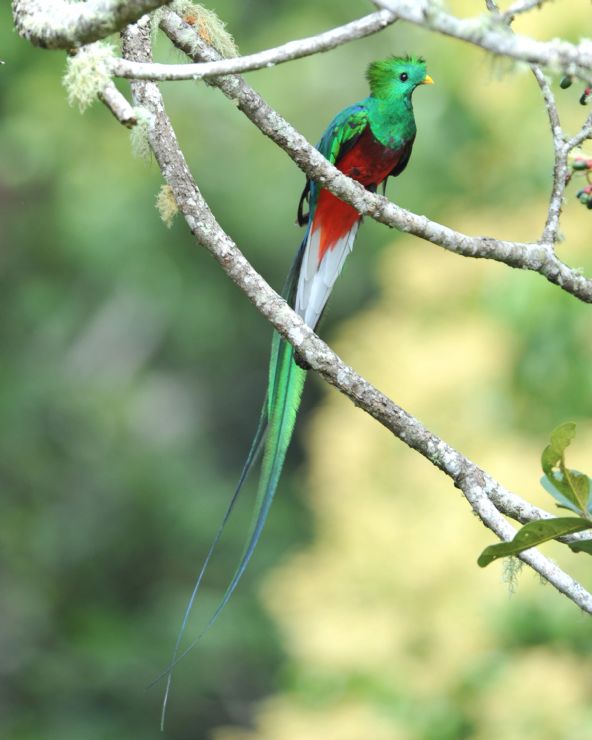 Resplendent Quetzal in Los Quetzales National Park
Resplendent Quetzal in Los Quetzales National Park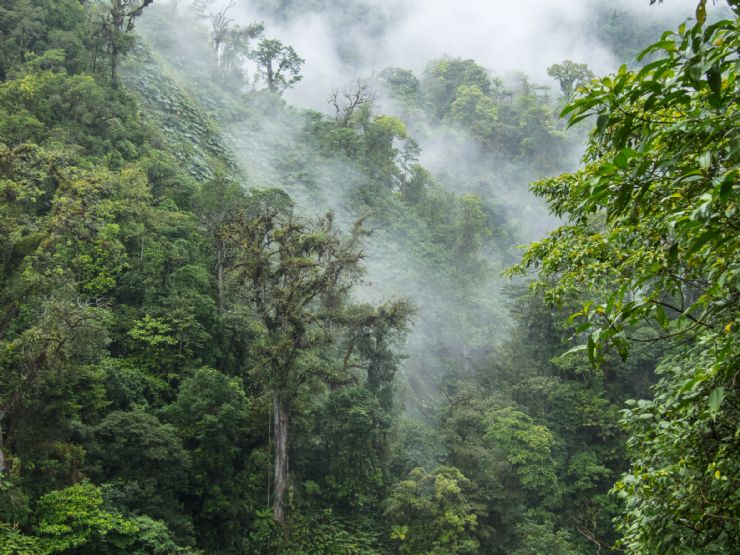 Clouds engulfing the Monteverde Cloud Forest
Clouds engulfing the Monteverde Cloud Forest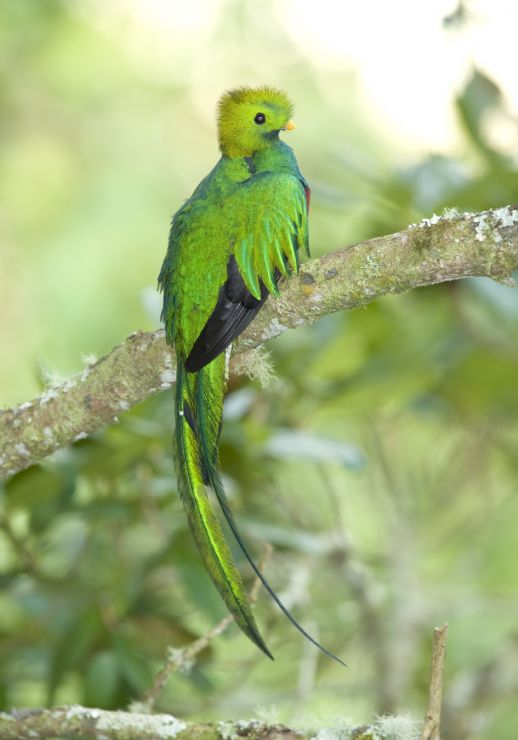 Colorful Quetzal in the forest of Savegre
Colorful Quetzal in the forest of Savegre